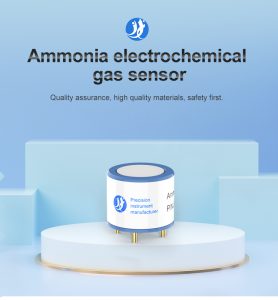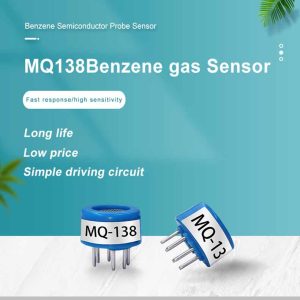Indoor air quality (IAQ) is a critical aspect of building safety and occupant health. Poor IAQ can lead to various health problems, including respiratory issues, allergies, and headaches. One of the leading causes of poor IAQ is indoor air pollution caused by volatile organic compounds (VOCs), carbon monoxide (CO), and other gases emitted by building materials, furniture, appliances, and human activities. Real-time gas monitoring solutions are essential for detecting and controlling these pollutants to ensure healthy and safe indoor environments. In this article, we will explore different real-time gas monitoring solutions used for indoor air quality control.

Photoionization Detectors (PIDs) Photoionization
detectors are commonly used to detect VOCs in indoor air. These detectors utilize a high-energy ultraviolet lamp to ionize VOC molecules, creating a measurable electrical current. The magnitude of the current is proportional to the concentration of the VOCs, allowing for accurate detection and quantification.
One of the benefits of PIDs is their ability to detect a wide range of VOCs
including those with low vapor pressures. PIDs are also fast and sensitive, providing real-time data on VOC concentrations. However, they may be prone to interference from other gases and have limited sensitivity at low concentrations.
Carbon Monoxide (CO) Sensors Carbon monoxide
is a colorless and odorless gas that poses a severe risk to human health, leading to headaches, dizziness, and even death at high concentrations. CO sensors utilize electrochemical or metal oxide-based technologies to detect and quantify CO concentrations in indoor air.
Electrochemical CO sensors operate by measuring
the current generated during the reaction between CO and an electrode. Metal oxide sensors, on the other hand, detect changes in resistance as CO interacts with the sensor material. Both types of sensors provide real-time data on CO concentrations, allowing for prompt action in case of elevated levels.
Nitrogen Dioxide (NO2) Sensors Nitrogen dioxide
is a toxic gas that can cause respiratory problems and aggravate asthma and other lung diseases. NO2 sensors utilize electrochemical or metal oxide-based technologies to detect and quantify NO2 concentrations in indoor air.
Electrochemical NO2 sensors
operate by measuring the current generated during the reaction between NO2 and an electrode. Metal oxide sensors detect changes in resistance as NO2 interacts with the sensor material. Both types of sensors provide real-time data on NO2 concentrations, allowing for prompt action in case of elevated levels.
Oxygen (O2) Sensors Oxygen sensors
are essential for monitoring the air quality in enclosed spaces such as laboratories and hospitals. These sensors detect changes in oxygen concentration, providing valuable information on the ventilation and air exchange rates in these environments.
Oxygen sensors typically
employ electrochemical or optical sensing technologies. Electrochemical sensors measure the current generated by the reaction between oxygen and an electrode. Optical sensors measure the light absorption of oxygen molecules, providing real-time data on oxygen concentrations.
Particulate Matter (PM) Sensors Particulate matter
refers to tiny particles suspended in the air, which can cause respiratory problems and other health issues. PM sensors utilize optical or gravimetric technologies to detect and quantify the concentration of particulate matter in indoor air.

Optical PM sensors use laser beams
to scatter light off particles in the air, generating a signal that correlates with the particle concentration. Gravimetric PM sensors collect particles on a filter, which is then weighed to determine the mass concentration of particulate matter.
Conclusion Real-time gas monitoring
olutions are essential tools for ensuring healthy and safe indoor environments. Photoionization detectors, carbon monoxide sensors, nitrogen dioxide sensors, oxygen sensors, and particulate matter sensors provide valuable information on the concentration of various gases and particulate matter in indoor air. By utilizing these sensors, building managers and occupants can take prompt action to mitigate the effects of indoor air pollution and maintain healthy indoor environments.
 : +86 155 8830 2704
: +86 155 8830 2704 : jxdziot@gmail.com
: jxdziot@gmail.com
